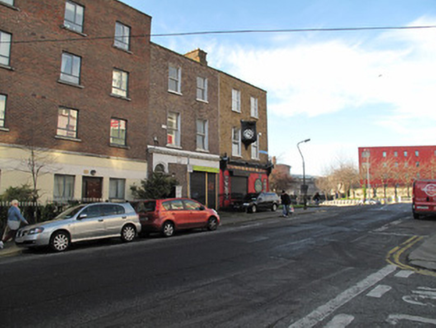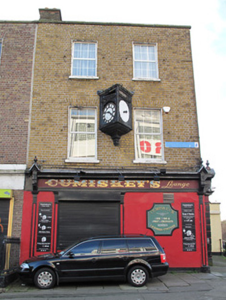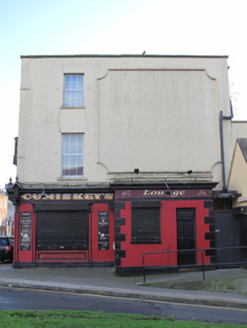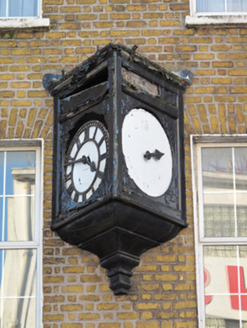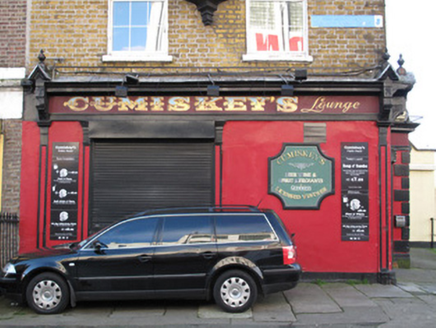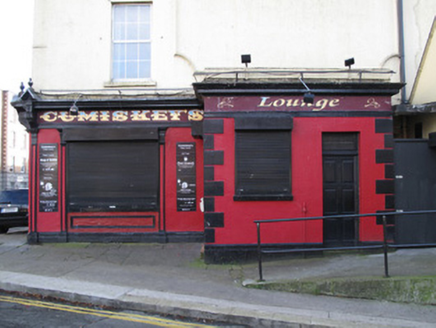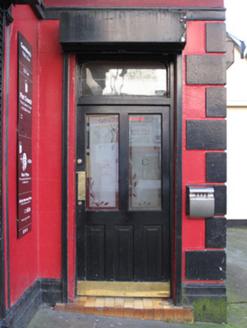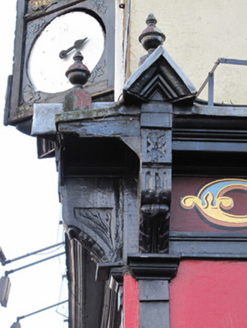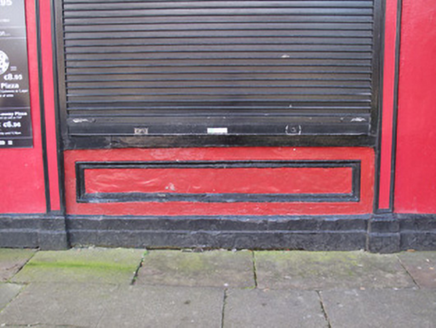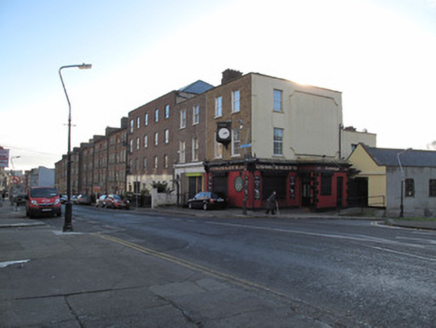Survey Data
Reg No
50070387
Rating
Regional
Categories of Special Interest
Architectural, Artistic, Social
Original Use
House
In Use As
Public house
Date
1845 - 1855
Coordinates
315106, 235157
Date Recorded
29/11/2012
Date Updated
--/--/--
Description
Corner-sited end-of-terrace two-bay three-storey house, built c.1850, with shopfront to front (north) and west elevations, single-storey projecting porch to west elevation. Now in use as public house. M-profile pitched slate roof, hipped to west, with shared brick chimneystacks, raised yellow brick parapet having granite coping to front and west elevations. Yellow brick walls laid in Flemish bond to front elevation, two-sided clock to first floor, rendered wall to west elevation, moulded render frame to west elevation. Square-headed window openings with yellow brick voussoirs, raised render reveals, painted masonry sills and replacement uPVC windows. Shopfront comprising rendered walls, panelled pilasters supporting gabled consoles and carved cornice over fascia, render plinth course. Block-and-start render quoins to porch. Square-headed window openings over panelled render risers, steel roller shutters, square-headed door openings to porch, having timber panelled and half-glazed timber panelled doors.
Appraisal
This building displays a regularity of design and proportion in the arrangement of fenestration, and is characteristic of architecture of this era. It shares a parapet height and fenestration alignment with its neighbouring building to the south, contributing to the horizontal aspect of the streetscape. The shopfront to the ground floor provides contextual as well as aesthetic interest, placing it within a commercial context. Dominick Street began to be developed from the mid eighteenth century, when the widow of Sir Christopher Dominick decided to let the land in lots for building. However, Upper Dominick Street was not developed until some hundred years later, when the construction of the Midland Great Western Railway Terminus at Broadstone prompted considerable residential development in the area. The land on which this house was built belonged to the Palmerston family. The Dublin Street Directory of 1862 indicates that this was the residence of a Henry Holohan, grocery and spirit dealer, indicating a long history of this structure being in use as a public house, which would have received considerable business from the adjacent railway station. Several of the neighbouring plots are listed as being ‘building ground’ or vacant in this document, indicating that construction was ongoing.
